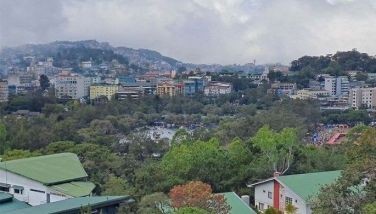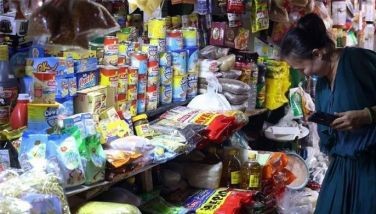6 bays nationwide still positive for red tide
May 19, 2004 | 12:00am
LOS BAÑOS, Laguna — Certain shellfish caught at six bays in the eastern and southern parts of the country still contain a high level of the deadly red tide toxin, the Department of Agriculture’s Bureau of Fisheries and Aquatic Resources (DA-BFAR) said yesterday.
In the laboratory analyses conducted by DA-BFAR, areas that are still covered by a "shellfish ban" are the waters of Masinloc, Zambales; Honda Bay in Palawan, Sorsogon Bay, Juag Lagoon in Matnog, Sorsogon; San Pedro Bay in Leyte and Samar, Balite Bay in Mati, Davao Oriental, and Dumanquillas Bay in Zamboanga del Sur.
The waters in Manila Bay off Cavite, Las Piñas, Parañaque, Navotas, Malabon, Bulacan and Bataan are still free from red tide — an algal bloom caused by the proliferation of a certain species of dinoflagellates that can turn the water red or brown — according to a report by the National Red Tide Task Force of the government’s Inter-agency Committee on Environmental Health.
The task force reported that other areas still free from red tide are the waters of Palauig, Zambales and Biliran, Leyte; Mandaon and Milagros waters in Masbate; the coastal waters of Silay, Banagao, Hinigaran, Victorias, E.B. Magalona, Valladolid, San Enrique and Talisay in Negros Occidental; Bais Bay in Negros Oriental; Sapian Bay and Tinagong Dagat in Capiz; Cancabato Bay in Tacloban City; Carigara and Ormoc Bays in Leyte; Tanguines Lagoon in Camiguin Island; as well as waters of Barobo, Hinatuan, San Agustin and Lianga Bay in Surigao del Sur.
The task force also warned that "Acetes spp. or ‘alamang’ in red tide-affected areas is not safe for human consumption." These tiny shrimp are often used to make a savory paste for flavoring various Filipino dishes.
However, fish, squid, shrimp and crabs are safe for human consumption provided these are fresh and internal organs, such as gills and intestines, are removed and washed thoroughly before cooking, the task force said.
The toxin produced by the red tide organism can be accumulated by filter feeders like shellfish. This toxin, which attacks the nerves and produces paralytic shellfish poisoning, persists even after the shellfish has been cooked.
In the laboratory analyses conducted by DA-BFAR, areas that are still covered by a "shellfish ban" are the waters of Masinloc, Zambales; Honda Bay in Palawan, Sorsogon Bay, Juag Lagoon in Matnog, Sorsogon; San Pedro Bay in Leyte and Samar, Balite Bay in Mati, Davao Oriental, and Dumanquillas Bay in Zamboanga del Sur.
The waters in Manila Bay off Cavite, Las Piñas, Parañaque, Navotas, Malabon, Bulacan and Bataan are still free from red tide — an algal bloom caused by the proliferation of a certain species of dinoflagellates that can turn the water red or brown — according to a report by the National Red Tide Task Force of the government’s Inter-agency Committee on Environmental Health.
The task force reported that other areas still free from red tide are the waters of Palauig, Zambales and Biliran, Leyte; Mandaon and Milagros waters in Masbate; the coastal waters of Silay, Banagao, Hinigaran, Victorias, E.B. Magalona, Valladolid, San Enrique and Talisay in Negros Occidental; Bais Bay in Negros Oriental; Sapian Bay and Tinagong Dagat in Capiz; Cancabato Bay in Tacloban City; Carigara and Ormoc Bays in Leyte; Tanguines Lagoon in Camiguin Island; as well as waters of Barobo, Hinatuan, San Agustin and Lianga Bay in Surigao del Sur.
The task force also warned that "Acetes spp. or ‘alamang’ in red tide-affected areas is not safe for human consumption." These tiny shrimp are often used to make a savory paste for flavoring various Filipino dishes.
However, fish, squid, shrimp and crabs are safe for human consumption provided these are fresh and internal organs, such as gills and intestines, are removed and washed thoroughly before cooking, the task force said.
The toxin produced by the red tide organism can be accumulated by filter feeders like shellfish. This toxin, which attacks the nerves and produces paralytic shellfish poisoning, persists even after the shellfish has been cooked.
BrandSpace Articles
<
>
- Latest
- Trending
Trending
Latest
Trending
Latest
Recommended
































